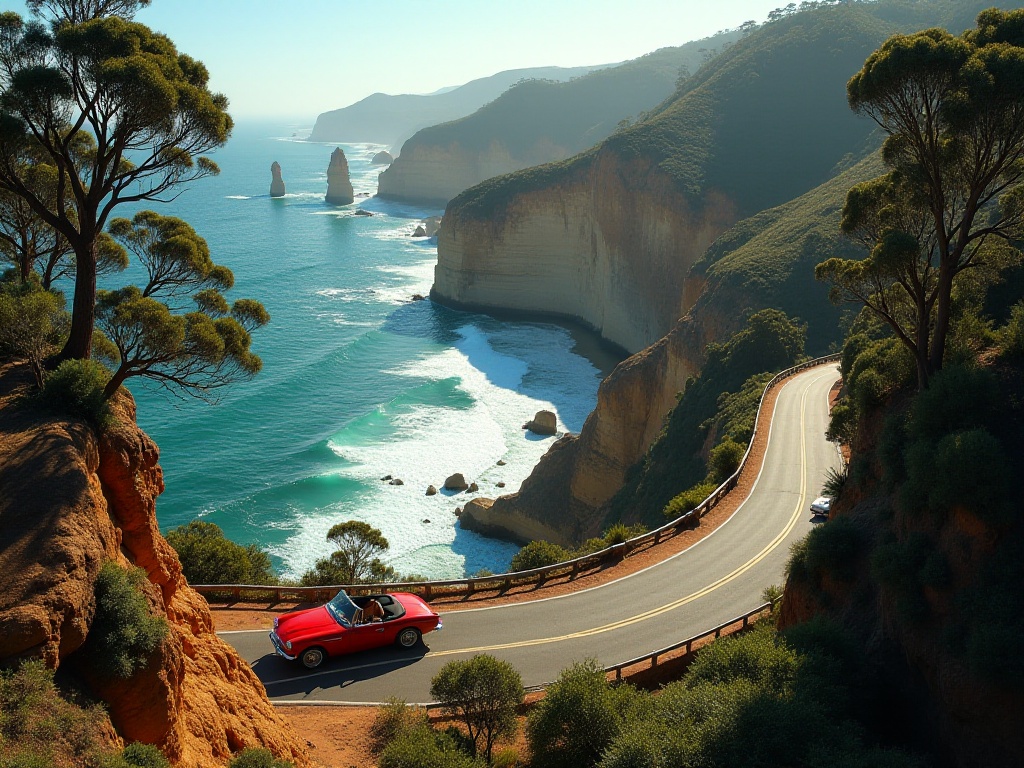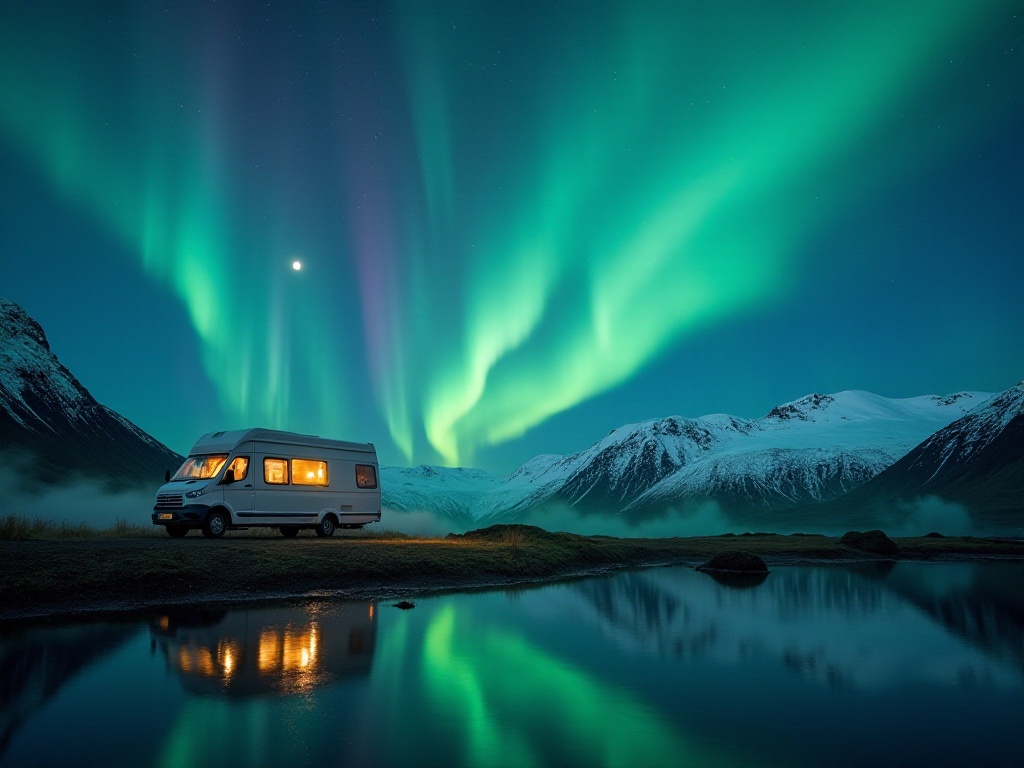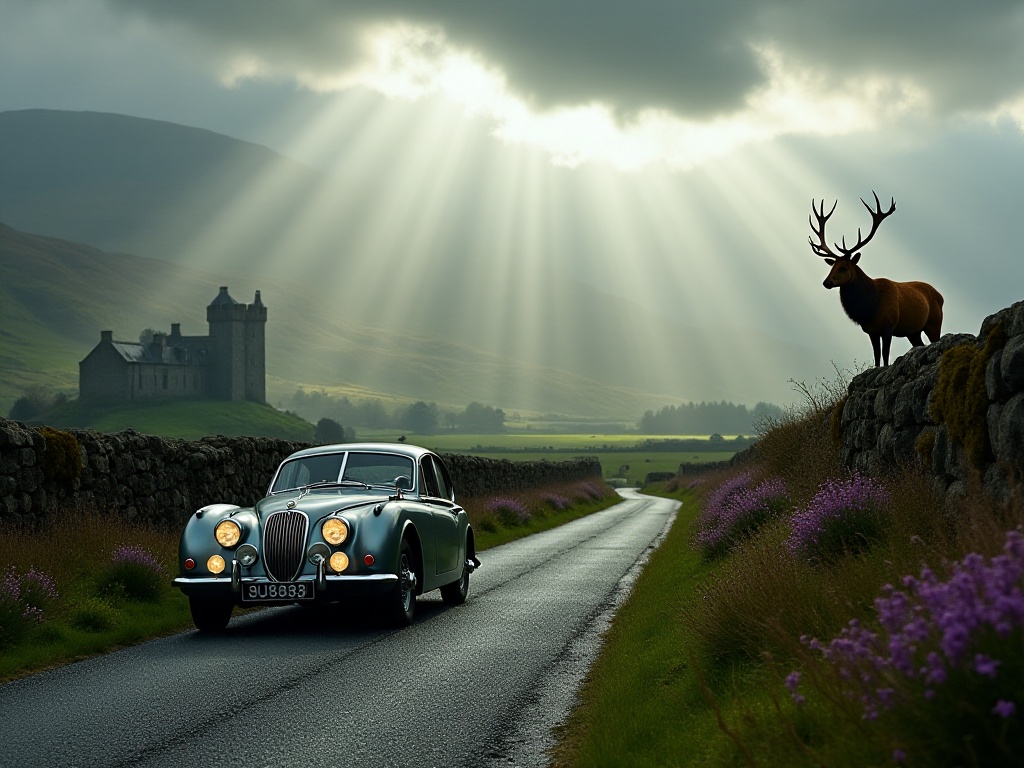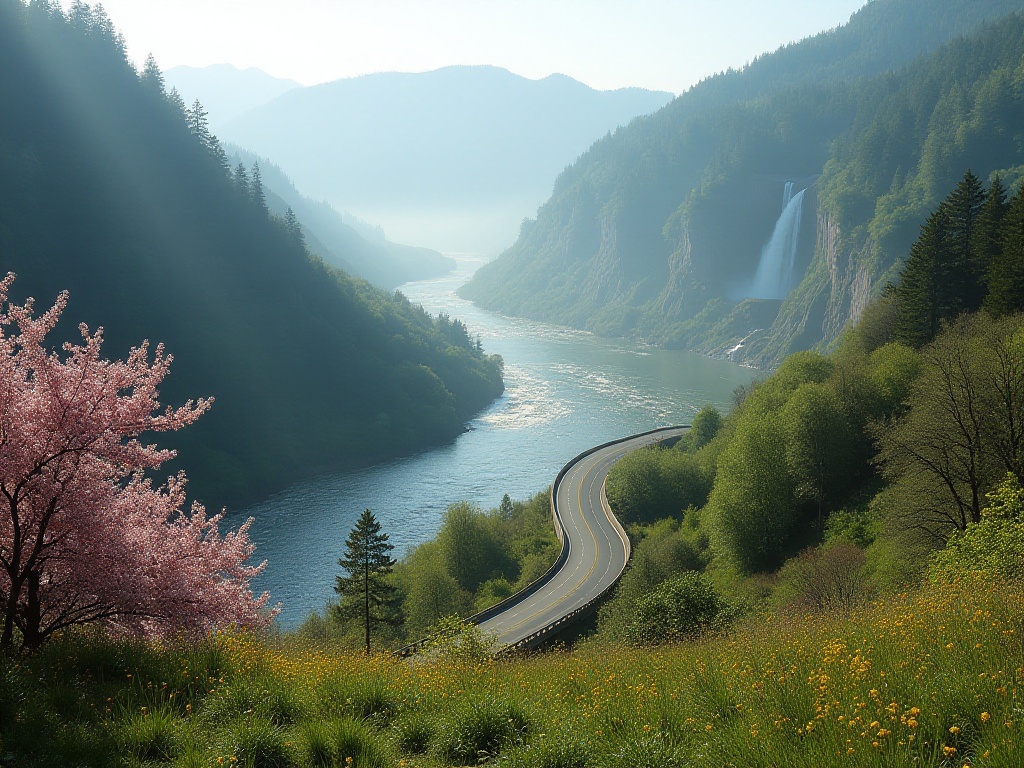Opening Chat
A few days ago, I received a message: "How's self-driving in Iceland? I really want to go but have no experience, I'm so nervous!" Seeing this question made me very excited! As someone who has self-driven in Iceland three times, I totally understand these concerns. To be honest, I was also very worried before my first trip, but looking back now, those worries were completely unnecessary. Today, let me share all my accumulated experience with you, guaranteed to transform you from a novice to a self-driving expert!
Iceland's Beauty
When thinking of Iceland, many images immediately come to mind: the aurora dancing in the night sky, like God spilled his palette, with green light bands dancing under the stars; glacier ice caves glowing with dreamy blue light, like being in a fairy tale; the moment geysers erupt, with steaming water columns shooting skyward, leaving one speechless.
I still remember my first time driving on the Ring Road - it was absolutely amazing! Cruising down the highway (while following traffic rules, of course), with endless black lava landscapes on both sides, snow-capped mountains appearing in the distance, and an impossibly blue sky. Every turn was like opening a mystery gift box - you never knew what you'd see next.
Once while driving, I suddenly saw a vast field of golden rapeseed flowers by the road, glistening in the sunlight, so beautiful that I immediately pulled over. Another time, I heard the rushing sound of water from afar, looked up, and saw a magnificent waterfall appearing without warning, its spray creating a breathtaking scene.
The most delightful encounter was with Icelandic horses. One morning while driving, I saw a group of Icelandic horses leisurely having breakfast in a roadside field. These horses had sleek coats, were petite in size, and were absolutely adorable! They weren't afraid of people at all - when I got out of the car to approach them, several walked toward me curiously, allowing me to take many beautiful photos.
Iceland's terrain is incredibly diverse, from volcanoes to glaciers, black sand beaches to hot springs, tundra to fjords - it's like a geography textbook come to life. Sometimes driving for just an hour feels like passing through four seasons. Every corner here tells the story of nature's incredible craftsmanship, truly earning its title as the "Land of Ice and Fire"!

Best Time to Visit
When it comes to the best time to visit, I've been asked this countless times. Honestly, it really depends on what you want to experience. If you're like me and really want to see the aurora, plan your trip between September and March. I remember my second visit was in late October - the aurora was incredible! We could see it for several nights in a row, and once we even saw pink aurora, which was absolutely stunning!
For outdoor enthusiasts interested in hiking and camping, June to August is perfect. The days are extremely long then, with the sky still bright at 11 PM - it's an outdoor activity paradise. Last summer I experienced hiking under the midnight sun, and it was magical - time seemed to slow down.
However, I should especially warn against choosing July or August. While the weather is best then, it's also the most expensive and crowded time. I made this mistake once - accommodation prices doubled, attractions were packed everywhere, and you had to queue just to take photos, which really diminished the experience. If these are your only available vacation times, make sure to book accommodation and car rentals six months in advance, or it will be really troublesome.
Spring and autumn are also great, especially September and May. There are fewer tourists then, and prices are more reasonable. Plus, you can see wildflowers blooming in spring and colorful autumn scenery in fall - both are excellent choices.
Iceland has different beauty in each season - it just depends on what kind of experience you're looking for. My personal favorite is October because you can see the aurora then, the weather isn't too cold yet, and the autumn colors are particularly beautiful.

Ring Road Route Planning
When it comes to route planning, I have plenty to say! I've tried both 7-day and leisurely 14-day Ring Road trips, and concluded that 10 days is perfect! Why? Because while 7 days is enough to complete the circuit, you're rushing every day with no time to properly experience things; 14 days is very relaxed but quite expensive. 10 days is just right - enough time to see everything worth seeing while leaving time to explore some lesser-known spots.
Here's my golden Ring Road itinerary:
Days 1-2 in Reykjavik and surroundings. First day exploring the world's northernmost capital, visiting the iconic church, soaking in the Blue Lagoon. Second day for the Golden Circle, with its must-see geysers, waterfalls, and rifts. Don't forget Thingvellir National Park - take photos at the intersection of the Eurasian and North American plates, something you can't see elsewhere!
Days 3-4 heading south. The south coast is definitely the highlight of the entire trip! Black sand beaches, plane wreckage, Jökulsárlón glacier lagoon - any one of these will take your breath away. When I first saw the glacier lagoon, with blue icebergs floating on the surface, it seemed unreal. Don't forget Vatnajökull glacier - in winter you can join an ice cave tour, absolutely worth the price!
Days 5-6 mainly exploring the eastern fjords. This stretch of road is particularly thrilling, with steep cliffs on one side and azure waters on the other. The east has fewer tourists but beautiful scenery, with many local characteristic towns hidden in the fjords. Just sit in any café, enjoy the sea view - it's perfectly relaxing.
Days 7-8 in the northern region, home to numerous geothermal features. Mývatn Nature Baths are cheaper and more peaceful than the Blue Lagoon. Húsavík town is great for whale watching - if you're lucky, you might see humpback whales breaching. Akureyri is Iceland's second-largest city but feels very cozy, with a small-town atmosphere.
Days 9-10 on the Snæfellsnes Peninsula. This is like a miniature Iceland, with volcanoes, glaciers, cliffs, and black churches all in one place. Kirkjufell Mountain is here - super photogenic! The last day returns to Reykjavik, where you can properly explore the city center and buy souvenirs.
This itinerary is quite relaxed, with daily driving limited to 3-4 hours, allowing plenty of time to stop for photos or exploration. I always include some flexible time, as Iceland's weather is very unpredictable, and you might want to spend extra time at an interesting spot you discover.

Budget Matters
Many people assume Iceland must be very expensive, but with proper planning, you can keep the budget within a reasonable range. Let me break down the costs using 2024 prices:
For car rental, a regular 2WD costs about 2000 kronur per day, while 4WD is more expensive at around 3000 kronur. Split between 4 people, it's actually quite reasonable. I recommend comparing prices across several platforms as the differences can be significant.
Accommodation costs vary widely. A standard double room in the city costs at least 600 kronur per night, or 1000 kronur for better conditions. However, farm guesthouses or hostels might only cost 300-400 kronur. I suggest planning accommodation according to your itinerary - stay in better places in Reykjavik and choose farms or hostels in smaller places, saving money while experiencing different environments.
Food is indeed a significant expense. A proper restaurant meal costs at least 200 kronur, but you can save money by cooking yourself. Buy some instant foods or bread from supermarkets, prepare your own breakfast and lunch, and eat at restaurants for dinner - this way you can control food costs to 200-400 kronur per day.
Entrance fees depend on specific activities. The Blue Lagoon costs over 100 kronur, ice cave experiences over 200 kronur, and whale watching tours about 200 kronur. However, many natural attractions like waterfalls and black sand beaches are free to visit.
Overall, a 10-day Ring Road trip can be done well for around 10,000 kronur per person if you're not too particular about accommodation. Of course, if your budget allows and you want to experience more special activities, spending 15,000-20,000 is normal. The key is planning ahead according to your budget and spending money wisely.

Car Rental Tips
Car rental is absolutely the most crucial part of a self-drive tour - there's no room for carelessness. I really regret only renting a 2WD car my first time, as I didn't dare drive on some minor roads and missed many interesting places. I strongly recommend renting a 4WD, especially from October to April. While Route 1 (Ring Road) is in good condition, many attractions require driving on gravel or mountain roads to reach.
Book your car early! I now start looking 3-6 months ahead. Prices increase daily as peak season approaches, and good vehicles get booked up. Compare several rental platforms - international brands like Sixt and Hertz are reliable.
Get full insurance coverage! Don't try to save money here. Iceland's weather is extremely variable, and some road sections have very strong winds - scratches can happen at any moment. Having full insurance during my second trip made me feel much more secure. Sand and ash insurance is particularly important as Iceland often has sandstorms - repairs without this coverage will make you cry.
When picking up the car, carefully check its condition and photograph all existing scratches. Have staff inspect the car in person when returning it to avoid unnecessary disputes.

Accommodation Choices
I have plenty of experience to share about accommodation! First, book in advance, at least 2-3 months ahead. My first time, I thought I could book on arrival, but found all the good places were full and had to settle for an overpriced hotel.
Iceland has many accommodation options. Farm guesthouses are perhaps the most unique. I remember staying at a farm where I saw the aurora from my bed - amazing! The farm owners are usually very friendly, often sharing local stories and letting you experience farm life.
If budget allows, try a glass house. Watching stars and aurora from bed is expensive but worth it! Last winter I spent one night in a glass house - we were lucky to see beautiful aurora, and the experience of watching it from a warm room was incredible!
Hostels are also good, especially for solo travelers. Iceland's hostels are nice, and you can meet travelers from around the world, hear their stories, and share travel experiences. I made several interesting friends at a Reykjavik hostel whom I still keep in touch with.
When booking, check the location - preferably near Route 1 for convenient departure the next day. Also check if there's a kitchen, as eating out in Iceland is expensive, and self-catering can save money.

Practical Tips
Regarding practical tips, I've learned many lessons the hard way - they're all valuable experiences now!
First, weather forecasts are crucial! Iceland's weather changes as quickly as a child's mood. Once I left in bright sunshine but encountered a storm after an hour, barely able to drive. Always check weather forecasts - I use vedur.is, Iceland's official site, which is very accurate.
Gas stations are also key. In Iceland, fill up whenever you see a station - don't wait until you're low on fuel. Some stations are over 200km apart. Most are self-service and require credit cards - ensure you have sufficient credit limits.
Navigation is another challenge. Some areas have poor signal coverage, so relying solely on online navigation can be risky. I now download offline maps and use both Google Maps and Maps.me as backup. Don't blindly trust navigation - sometimes it routes you through very remote roads, so stay alert.
Credit cards are essential in Iceland - almost everywhere uses them, even small shops for water. Bring two cards from different banks as backup. Remember to notify your bank about traveling to Iceland to prevent card locks.
Pack enough clothes, even in summer bring thick jackets. Iceland's weather is magical - last summer I went from wearing t-shirts in the morning to needing down jackets in the afternoon. Use layered dressing with multiple thin layers for easy weather adjustment.
Waterproofing is important! Both clothes and shoes must be waterproof. You'll likely get wet from waterfall spray, and non-waterproof gear makes for an uncomfortable day. I always bring a rain jacket now - it's essential for wind and water protection.
Bring sufficient power for cameras and phones. Iceland's scenery is so beautiful you can't stop photographing. Cold temperatures drain batteries faster, so bring several power banks. For aurora photography, don't forget a tripod - handheld shots will be blurry.

Final Words
Every time I recall my self-driving experiences in Iceland, I feel it was absolutely worth it. Those breathtaking landscapes, unexpected discoveries, and touching moments on the road have become precious memories.
The biggest advantage of self-driving is freedom. You can stop anytime to admire roadside scenery, stay an extra night for good aurora viewing, follow your instincts, and discover surprises beyond standard tour itineraries.
If you're considering an Iceland self-drive trip, don't worry too much. With proper preparation, you'll surely have an unforgettable journey. After all, travel isn't just about the destination, but the stories along the way.
By the way, if you have any questions, feel free to leave comments. Everyone's travel experience is unique, and your story might inspire others!







